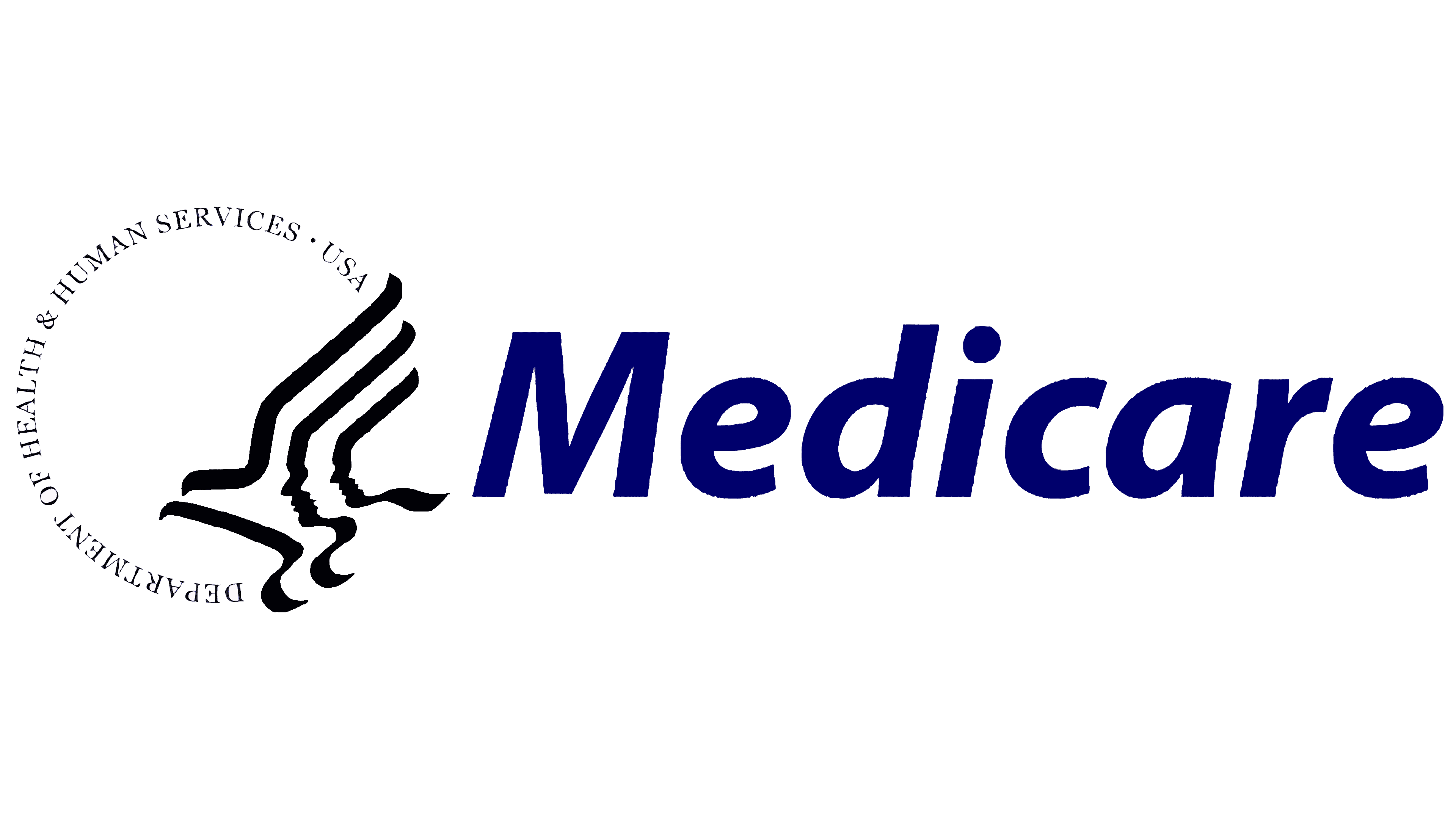(A Nurse-Led Intervention in Schizophrenia Patients to Improve Medication Adherence Compliance)

Abstract
Background: The project aims to evaluate the impact of technology with motivational interviewing on medication adherence among inpatient schizophrenia patients.
Problem: The project addresses medication adherence among schizophrenia patients.
Methods: The project adopts a pre-test and post-test analysis approach. Fifty consecutive schizophrenia patients following up with treatment will participate in the study.
Intervention: This DNP project pursues a nurse-led intervention to improve medication adherence and symptom management.
Results:
Conclusions:
Keywords: Medication non-adherence, Schizophrenia, motivational interviewing, success factors influencing motivational interviewing positive effects, motivational interviewing impact on medication adherence, motivational interviewing strategies.
Dedication (NR 709)
Acknowledgment (NR 709)
Table of Contents
Abstract 2
Dedication (NR 709) 3
Acknowledgment (NR 709) 4
Introduction. 7
Problem.. 7
Project Aim and Supporting Objectives (NR 702) 9
Practice Question (NR 702) 9
Research Synthesis and Evidence-Based Intervention. 10
Evidence-Based Intervention. 10
Evidence Synthesis. 11
Main Themes in the Research 11
Contrasting Elements in the Research 12
Research Support for the Evidence-Based Interventions. 13
Evidence-Based Intervention Implementation. 13
Explanation of the Evidence-Based Intervention. 13
Steps in the Intervention Implementation. 14
Participant Engagement during Intervention Implementation. 14
Methodology. 16
Organizational Setting. 16
Population. 16
Translational Science Model and Project Management Plan. 17
Project Management Plan. 19
Formative Evaluation Plan. 19
Plans for Sustainability. 20
Anticipated Outcomes. 21
Expected Change after Implementing Motivational Interviewing. 21
References. 22
Appendices, Tables, and Figures. 25
Appendix A.. 25
Johns Hopkins Nursing Evidence-Based Practice. 25
Table 1: Implementation Plan. 31
Table 2: Formative Evaluation Plan. 32
A Nurse-Led Intervention in Schizophrenia Patients to Improve Medication Adherence Compliance
Introduction
Schizophrenia is a mental disorder that impairs thought processes, patterns, perceptions, emotional responses, and social interactions (NIMH, n.d.). Schizophrenia is persistent and can be severe and disabling when symptoms are not adequately managed (NIMH, n.d.). This DNP project pursues a nurse-led intervention to improve medication adherence and symptom management. Mucci et al. (2020) recommend a person-centered approach to healthcare that encompasses building therapeutic relationships between providers and patients and collaboration between providers when working with schizophrenia patients to achieve compliance. Specifically, the project aims to evaluate the impact of technology with motivational interviewing on medication adherence among inpatient schizophrenia patients. This DNP Project Manuscript provides the introduction, background, problem, project aim, supporting objectives, practice question, literature synthesis, and methodology. (A Nurse-Led Intervention in Schizophrenia Patients to Improve Medication Adherence Compliance)
Problem
Numerous studies have shown a varying prevalence of Schizophrenia globally and in the US. The global prevalence of Schizophrenia among non-institutionalized persons ranges between 0.33% and 0.75%, while in the United States, Schizophrenia is 0.25% to 0.64% (NIMH, n.d.). Non-adherence to medication among Schizophrenia patients is well documented in the United States (US) and globally. Desai and Nayak (2019) suggest most schizophrenia patients are non-compliant with medication, a national and global problem that affects 70% of patients.
Non-adherence increases the use of outpatient and hospital-related resources, while comorbidities and demographic factors exacerbate the problem. Additionally, it affects health outcomes among schizophrenia patients, increasing the risk of premature death compared to the general population, making it a significant health problem at the practicum site. The average life lost in the US due to Schizophrenia is about 28.5 years (NIMH, n.d.). Most comorbid conditions associated with Schizophrenia, including liver disease, heart disease, and diabetes, increase the risk of premature and go unrecognized. Over 50% of schizophrenia patients have additional behavioral and mental health problems. According to NIMH (n.d.), an estimated 4.9% of individuals diagnosed with Schizophrenia commit suicide, significantly higher than the general population, estimated at 14.2 per 100,000 people or 0.0142%.
The financial costs associated with managing Schizophrenia increase exponentially with co-occurring mental, physical, and behavioral health conditions. The direct costs include those related to the hospital stay and medication due to worsening symptoms and general health conditions. In contrast, the indirect costs include costs due to social service needs, lost productivity, involvement of criminal justice, and issues beyond healthcare. The total cost of managing Schizophrenia and co-occurring health problems averages $2,004 to 94,229 per person per year (Kotzeva et al., 2022). Per Kotzeva et al. (2022), indirect costs make up 50-60% of the total cost, making it the primary cost driver, averaging $1,852 to $62,431 per person per year.
Non-adherence to medication among schizophrenia patients is a significant problem at the practicum site, associated with an increased risk of premature death compared to the general population, hospital stays, frequent readmissions, and increased healthcare burden for the family and the system. Family and patient education help address non-adherence, but no evidence indicates desired success because it continues to be a problem among this patient population. In addition, there is no documentation of other interventions to address the non-adherence at the practicum site. This project is an opportunity to adopt motivational interviewing and technology, evidence-based interventions with indicated benefits, and high success rates in addressing non-adherence. (A Nurse-Led Intervention in Schizophrenia Patients to Improve Medication Adherence Compliance)
Project Aim and Supporting Objectives (NR 702)
The DNP project aims to determine the impact of motivational interviewing and technology on medication adherence among inpatient schizophrenia patients. The project objectives are as follows:
- To evaluate the role of technology on medication adherence among inpatient schizophrenia patients.
- To assess the impact of motivational interviews on medication adherence among inpatient schizophrenia patients.
- To compare the impact of technology and motivational interviewing on medication adherence and the current interventions for enhancing medication adherence at the practicum site
Practice Question (NR 702)
The following practice question will serve as the basis of the DNP project: For adults with a history of Schizophrenia (P) in the inpatient setting, does the implementation of technology with motivational interviewing (I), compared with current practice (C), impact medication non-adherence (O) in 8-10 weeks (T)?
Research Synthesis and Evidence-Based Intervention
Evidence-Based Intervention
Motivational Interviewing (MI) is an evidence-based intervention to encourage behavioral change. MI is a collaborative, goal-oriented communication approach that focuses on the language of change to help people bolster personal or intrinsic motivation for and commitment to a particular objective by considering the individual’s need for change in an accepting and compassionate atmosphere. MI guides communication, balancing good listening and offering information and advice to empower individuals to change by eliciting their meaning, need, and capacity for change. Its foundation is a respectful and curious approach to interacting with people to promote a natural change process while honoring the patient’s autonomy. MI is primarily used for patients unwilling or ambivalent to change, combining different evidence-based interventions from cognitive and social psychology. It assumes that individuals with problematic attitudes and behaviors have varying readiness for change levels. Not recognizing the ambivalence would lead to patients rendering well-intentioned medical advice threatening their autonomy and freedom of choice, increasing their will to exercise their freedom to make choices, and increasing non-adherence. The DNP project adopts MI as an evidence-based intervention to increase personal motivation for and committed attitudes and behaviors to help schizophrenia patients find their meaning and need for change in an accepting and empathetic atmosphere, aiming to improve medication adherence. The Motivation Interviewing Network of Trainers (MINT) endorses this intervention to encourage behavioral change. (A Nurse-Led Intervention in Schizophrenia Patients to Improve Medication Adherence Compliance)
Evidence Synthesis
This evidence-based synthesis of research supports the intervention, motivational interviewing, and its impact on medication adherence. Ten articles fit the inclusion criteria, which required articles to be five years old or less, evidence-based, peer-reviewed, and demonstrate the efficacy of the chosen intervention, i.e., technology with motivational interviewing (MI) in improving medication adherence. Both qualitative and quantitative studies supporting the intervention were selected for this paper. The ten articles selected for review include Dobber et al. (2018), Dobber et al. (2020), Harmacnci and Budak (2022), Zomahoun et al. (2017), Pupus et al. (2022), Palacio et al. (2019), Hogan et al. (2020), Aubeeluck et al. (2021), Khadoura et al. (2021), and Abughosh et al. (2019).
Of the selected articles, six were level I, one was level II, and three were level III. The types of evidence included in level I evidence are clustered randomized controlled trials, experimental studies, and systematic reviews of RCT with or without meta-analysis. Types of evidence in level II evidence is a prospective study. Finally, level III evidence includes a qualitative multiple case study, mixed method study, and secondary data analysis. All studies were high quality, with consistent, generalizable findings, a sufficient sample size for the respective designs and study purpose, adequate control, definitive conclusions, and pervasive recommendations based on the results. (A Nurse-Led Intervention in Schizophrenia Patients to Improve Medication Adherence Compliance)
Main Themes in the Research
The primary themes include success factors influencing MI positive effects, association between MI techniques and medication adherence, and MI impact on medication adherence. Regarding success factors influencing MI positive effects, Dobber et al. (2018) and Dobber et al. (2020) established that trusting relationships between patients and therapists, the therapist’s ability to adopt or tailor MI strategy to a patient’s issues, and incorporating the patient’s values, needs, and perceptions of long-term medication adherence can increase MI-intervention success for medication adherence in schizophrenia patients and that a trusting relationship and empathy could help trigger mechanisms of change and enhance medication adherence. On the association between MI techniques and medication adherence, various MI techniques, including telephonic MI, fidelity-based feedback, face-to-face MI, MI-consistent (MICO) method, and MI-techniques-based psychoeducation are associated with improved medication adherence (Palacio et al., 2019; Abughosh et al., 2019; Hogan et al., 2020; Harmanci & Budak, 2022). Regarding MI impact on medication adherence, Papus et al. (2022), Zomahoun (2018), Aubeeluck et al. (2021), and Khadoura et al. (2021) established a positive association between MI and medication adherence and associated factors self-efficacy and patients’ intrinsic motivation. (A Nurse-Led Intervention in Schizophrenia Patients to Improve Medication Adherence Compliance)
Contrasting Elements in the Research
Regarding MI-based telephone intervention, Palacio et al. (2019) found varying effects across various categorical measures, implying that telephonic MI impacted different groups or measures differently. However, Abughosh et al. (2019) findings across all patient groups were consistent, indicating better results for those who received two or more calls. Themes vary across the studies. Dobber et al. (2018) and Dobber et al. (2020) address the success factors influencing MI’s positive effects. Palacio et al. (2019), Abughosh et al. (2019), Hogan et al. (2020), and Harmanci and Budak (2022) address specific MI techniques adopted to address medication adherence, including telephonic MI, fidelity-based feedback, face-to-face MI, MI-consistent (MICO) method, and MI-techniques-based psychoeducation. Papus et al. (2022), Zomahoun (2018), Aubeeluck et al. (2021), and Khadoura et al. (2021) address MI in general and its effectiveness in improving medication adherence. (A Nurse-Led Intervention in Schizophrenia Patients to Improve Medication Adherence Compliance)
Research Support for the Evidence-Based Interventions
MI was selected because of its adaptability to many settings (Pupus et al., 2022). Moreover, MI has significantly impacted medication adherence (Dobber et al., 2018; Dobber et al., 2020; Harmacnci and Budak, 2022; Zomahoun et al., 2017; Pupus et al., 2022; Palacio et al., 2019; Hogan et al., 2020; Aubeeluck et al., 2021; Khadoura et al., 2021; Abughosh et al., 2019). MI is also associated with various mental health outcomes that promote medication adherence, such as hope and mental well-being (Harmacnci & Budak, 2022). These aspects of MI suggest that the intervention is evidence-based and can help mitigate medication non-adherence among schizophrenia patients in an inpatient facility. (A Nurse-Led Intervention in Schizophrenia Patients to Improve Medication Adherence Compliance)
Evidence-Based Intervention Implementation
Explanation of the Evidence-Based Intervention
Across the research studies, MI is an evidence-based, collaborative tool for improving medication adherence. The studies acknowledge MI focuses on patient ambivalence and lack of the individual’s motivation and commitment to change. Patients are aware of the positive effects of medication, such as preventing psychotic relapse and readmission but are burdened by the side effects and the need to take medication as prescribed. The therapist is at the center of implementing MI in healthcare organizations and is deliberately influencing patients’ motivation for change by adopting strategies such as change talk elicitation, sustain talk, developing trusting relationships with patients, adopting empathetic attitudes, and communicating partnerships with patients. The therapist can intervene through the four overlapping processes of MI. The processes include engaging or relation building, focusing or identifying a patient’s change, evoking or eliciting change talk and client’s need for change, and planning or helping the patient create a comprehensive change plan. The therapists are integral across studies in implementing MI techniques such as telephonic MI, calling and communicating with the patients, fidelity-based feedback, face-to-face MI, MI-consistent (MICO) method, and MI-techniques-based psychoeducation. Generally, the studies consider the therapist imperative in implementing MI and the patient and patient perspectives as the drivers of MI.
Steps in the Intervention Implementation
Across the research studies, MI and MI techniques have been adopted using the four processes of MI: engaging, focusing, evoking, and planning. The first process, engaging, allows the therapist to develop a good trusting and working relationship with the client to understand the problem, using reflective listening to understand the client and the ambivalent attitude. The second process is focusing, which involves identifying a clear objective and goal, including identifying target behavior, exploring ambivalence and barriers, and establishing discrepancy. The project’ intervention target behavior is medication adherence. In the evoking process, the therapist tries to evoke the client’s internal motivation and needs for change and reinforce the overall motivation for change. This process involves the change talk that stimulates desire and motivation for change and mobilizes commitment, and sustain talk, which ensures the target behavior is sustained over time.
Participant Engagement during Intervention Implementation
Motivational interviewing is more patient-centered, promoting the patient’s autonomy while eliciting motivation, the need for change, and commitment to change. The practitioner will engage patient perspectives through the implementation and the MI processes to ensure continuous patient engagement. Practitioners involved will continuously ask questions, reinforce responses using affirmations, and adopt a lot of reflective listening to ensure the patients feel heard and engaged, encouraging their involvement through the intervention implementation. A good and trusting relationship will precede every activity to establish good engagement before beginning the change conversation. The therapists will use the guiding style to engage participants, clarify strengths, motivation, and need for change, and foster autonomy in decision-making to ensure full involvement throughout the implementation. (A Nurse-Led Intervention in Schizophrenia Patients to Improve Medication Adherence Compliance)
Methodology
This section describes the organizational setting, project population, translation science model and project management, plans for sustainability, and anticipated outcomes.
Organizational Setting
The healthcare setting is a general mental health facility located in Los Angelos, California, for treating various mental health disorders. The organization adopts mental health teams based in communities, that offer daily support and treatment while helping schizophrenia patients gain independence. The teams include nurses, therapists, psychiatrists, psychologists, and social workers.
The study focuses on patients with Schizophrenia as the primary diagnosis. Schizophrenia is associated with significant thinking or cognitive, behavioral, and emotional problems. Individuals between 16 and 25 are the most vulnerable, although new schizophrenia cases increase in their teenage years. Most patients present with hallucinations, delusions, and confused or disturbed thoughts that impact behavior and social and occupational functioning. About 150-230 schizophrenia patients are seen monthly at the facility or in their respective homes by the mental health teams based in the communities. On average, a hospitalized schizophrenia patient can stay in the hospital between 11 days to 23 days, depending on the condition and symptoms severity. An experienced psychiatrist coordinates a team consisting of a combination of psychopharmacologists, therapists, social workers, nurses, vocational counselors, and case managers contributes to patient health management and outcome.
Population
The first 50 consecutive schizophrenia patients that fit the inclusion criteria will be involved in the study. The project population includes schizophrenia patients experiencing thinking or cognitive, behavioral, and emotional problems, both men and women reporting at the facility or requesting home visits from the mental health team based in the communities. The inclusion criteria is: patients diagnosed with Schizophrenia according to the International Statistical Classification of Diseases-10 criteria, between 18 and 65 years, and receiving treatment for the last six months, follow-up patients, patients with multiple schizophrenia episodes, and patients with recent psychotic relapse after non-adherence to therapy will be considered. The research invites existing users of health services at the facility to participate in the study. Participants will provide informed consent before collecting data as an inclusion requirement. In addition, the study will recruit any follow-up schizophrenia patient attending psychiatric evaluation in the inpatient or outpatient departments after consent. The exclusion criteria include acutely psychotic patients during the interview and patients with cognitive deficits impacting the interview or data collection. The researchers will first communicate participation requests and study details via text messages, which are suitable even for older patients.
Translational Science Model and Project Management Plan
The Iowa model of evidence-based practice will help implement motivational interviewing to enhance medication adherence among schizophrenia patients. It supports evidence-based practice implementation, research utilization, and knowledge transformation processes (Duff et al., 2020). Per the Iowa model, the DNP practice project development and implementation include the following steps:
- I identified medication non-adherence among schizophrenia patients as warranting EBP adoption.
- Medication non-adherence is a priority for the organization as it is linked with increased treatment failure, hospitalization, readmission, and mortality rates. Addressing this problem would improve hospital and patient health outcomes.
- I developed a team of a combination of psychopharmacologists, therapists, social workers, nurses, vocational counselors, and case managers to develop, examine, and implement motivational interviewing to address medication non-adherence among schizophrenia patients.
- I developed a practice question “For adults with a history of Schizophrenia (P) in the inpatient setting, does the implementation of technology with motivational interviewing (I), compared with current practice (C), impact medication non-adherence (O) in 8-10 weeks (T)?” to guide literature search and the DNP project. I searched for peer-reviewed articles from various databases, including PubMed, MEDLINE, and CINAHL, addressing the impact of motivational interviewing on medication adherence.
- I reviewed the articles based on their abstract, research purpose, methodology, research findings, evidence level, and quality and presented the results of 10 articles on the evidence synthesis summary tool/table. Based on the evidence, motivational interviewing is scientifically supported, sound, and clinically significant.
- Ten articles were identified as providing the best evidence to help answer the research question. Based on the assessment, the evidence is sufficient to guide and inform the implementation of motivational interviewing at the healthcare facility.
- The project team and I will implement motivational interviewing into a pilot program that includes follow-up schizophrenia patients only.
- The team and I will evaluate the implementation results to determine the impact of motivational interviewing on medication adherence among schizophrenia patients. Clinically significant results will warrant the implementation of motivational interviewing organization-wide.
Project Management Plan
The DNP project implementation will take 12 weeks to complete. Week 1 will involve identifying participants and collecting pre-implementation data. In week 2, steps 1, 2, and 3 will be completed, including problem identification, priority determination, and team development. In week 3, steps 4, 5, and 5, involving evidence gathering and analysis, research articles critiquing and synthesis, and evidence assessment for adequacy will be completed. The implementation of motivational interviewing will begin in week 4 and through weeks 5, 6, 7, 8, 9, 10, and 11. Finally, in week 12, post-summative data after intervention implementation will be collected and outcomes evaluated, which is step 8 of the project implementation plan, to determine the effectiveness of motivational interviewing in addressing medication adherence among schizophrenia patients and whether it is suitable to implement in the rest of the organization and patient populations. See Appendix B for implementation plan table.
Formative Evaluation Plan
The formative evaluation will include individual evaluation conducted before, during, and after intervention implementation aiming to improve project development and implementation design and performance and ensure activities are completed effectively and efficiently. This formative evaluation will help understand why and how the project works and other factors at work during project development and implementation and increase the likelihood of successful results or outcomes through continuous improvements informed by evaluation results at different project implementation steps. See Appendix C for formative evaluation plan table.
Plans for Sustainability
The sustainability objective is to ensure motivational interviewing’s organization-wide adoption and patients continues to enjoy its benefits in improving medication adherence over time. The project manager will have a checklist against which they will ensure that the intervention maintains alignment with the organization mission and vision statements and continues to achieve the project goals and objectives. The checklist will include critical success factors, including medication adherence measures that will help assess the continued effectiveness of the intervention. The sustainability plan adopts continuous quality and performance improvement that will require consistent data collection after project implementation. The project team will gather data on MI from patient records and the organization’s medical data regarding treatment failure, hospitalization, readmission, and mortality rates over time and patients’ self-reported surveys and interviews on changes in medication adherence behavior over time to measure the continual effectiveness of the intervention. The project team will continually conduct project auditing and feedback collection from providers, patients, family members, caregivers, and opinion leaders on the performance of MI post-implementation. The project team assigned with sustainability responsibilities will analyze the data and feedback to inform continuous quality improvement initiatives to ensure project sustainability. Additionally, ongoing provider and patient education will help ensure MI continues to improve medication adherence into the future. (A Nurse-Led Intervention in Schizophrenia Patients to Improve Medication Adherence Compliance)
Anticipated Outcomes
Expected Change after Implementing Motivational Interviewing
Implementing motivational interviewing is expected to improve medication adherence behavior, which is indicated by measures including treatment failure, readmission, hospitalization, and mortality rates. The desired changes based on these measures include decreased treatment failure rate, reduced readmission rate, decreased hospitalization rates, and decreased mortality rate associated with Schizophrenia. Per Aubeeluck et al. (2021), MI interventions significantly improved medication adherence in 5 RCTs and systolic blood pressure in 1 RCT. Khadoura et al. (2021) found that MI significantly improved medication adherence, self-efficacy, and intrinsic motivation for patients in the intervention group. According to Papus et al. (2022), MI improved medication adherence in 23 RCTs and risky behaviors and disease symptoms in 19 RCTs. Additionally, Zomahoun (2018) established that MI interventions might help improve medication adherence for chronic conditions in adults. The evidence indicates a positive relationship between motivational interviewing and medication adherence, although measures used vary for the different studies. (A Nurse-Led Intervention in Schizophrenia Patients to Improve Medication Adherence Compliance)
References
Abughosh, S., Wang, X., Serna, O., Esse, T., Mann, A., Masilamani, S., Holstad, M. M., Essien, E. J., & Fleming, M. (2019). A Motivational Interviewing Intervention by Pharmacy Students to Improve Medication Adherence. Journal of managed care & specialty pharmacy, 23(5), 549–560. https://doi.org/10.18553/jmcp.2019.23.5.549
Aubeeluck, E., Al-Arkee, S., Finlay, K., & Jalal, Z. (2021). The impact of pharmacy care and motivational interviewing on improving medication adherence in patients with cardiovascular diseases: A systematic review of randomized controlled trials. International journal of clinical practice, 75(11), e14457. https://doi.org/10.1111/ijcp.14457
Cabarrus College of Health Sciences. (2023, February 3). Cabarrus College of Health Sciences Library: IOWA Model. https://cabarruscollege.libguides.com/c.php?g=465666&p=5283295
Desai, R., & Nayak, R. (2019). Effects of medication non-adherence and comorbidity on health resource utilization in Schizophrenia. Journal of Managed Care & Specialty Pharmacy, 25(1), 37-46. https://doi.org/10.18553/jmcp.2019.25.1.037
Dobber, J., Latour, C., de Haan, L., Scholte op Reimer, W., Peters, R., Barkhof, E., & van Meijel, B. (2018). Medication adherence in patients with Schizophrenia: a qualitative study of the patient process in motivational interviewing. BMC Psychiatry, 18(1), 1-10. https://doi.org/10.1186/s12888-018-1724-9
Dobber, J., Latour, C., van Meijel, B., Ter Riet, G., Barkhof, E., Peters, R., … & de Haan, L. (2020). Active ingredients and mechanisms of change in motivational interviewing for medication adherence. A mixed methods study of patient-therapist interaction in patients with Schizophrenia. Frontiers in psychiatry, 11, 78. https://doi.org/10.3389/fpsyt.2020.00078
Duff, J., Cullen, L., Hanrahan, K., & Steelman, V. (2020). Determinants of an evidence-based practice environment: an interpretive description. Implementation science communications, 1, 85. https://doi.org/10.1186/s43058-020-00070-0
Harmanci, P., & Budak, F. K. (2022). The Effect of Psychoeducation Based on Motivational Interview Techniques on Medication Adherence, Hope, and Psychological Well-Being in Schizophrenia Patients. Clinical Nursing Research, 31(2), 202-216. https://doi.org/10.1177/10547738211046438
Hogan, A., Catley, D., Goggin, K., & Evangeli, M. (2020). Mechanisms of Motivational Interviewing for Antiretroviral Medication Adherence in People with HIV. AIDS and behavior, 24(10), 2956–2965. https://doi.org/10.1007/s10461-020-02846-w
Iowa Model Collaborative, Buckwalter, K. C., Cullen, L., Hanrahan, K., Kleiber, C., McCarthy, A. M., Rakel, B., Steelman, V., Tripp-Reimer, T., Tucker, S., & Authored on behalf of the Iowa Model Collaborative (2017). Iowa Model of Evidence-Based Practice: Revisions and Validation. Worldviews on evidence-based nursing, 14(3), 175–182. https://doi.org/10.1111/wvn.12223
Khadoura, K. J., Shakibazadeh, E., Mansournia, M. A., Aljeesh, Y., & Fotouhi, A. (2021). Effectiveness of motivational interviewing on medication adherence among Palestinian hypertensive patients: a clustered randomized controlled trial. European journal of cardiovascular nursing, 20(5), 411–420. https://doi.org/10.1093/eurjcn/zvaa015
Kotzeva, A., Mittal, D., Desai, S., Judge, D., & Samanta, K. (2022). Socioeconomic burden of Schizophrenia: A targeted literature review of types of costs and associated drivers across ten countries. Journal of medical economics, (just-accepted), 1-18. https://doi.org/10.1080/13696998.2022.2157596
Mucci, A., Kawohl, W., Maria, C., & Wooller, A. (2020). Treating Schizophrenia: Open Conversations and Stronger Relationships Through Psychoeducation and Shared Decision-Making. Frontiers in psychiatry, 11, 761. https://doi.org/10.3389/fpsyt.2020.00761
National Institute of Mental health. (No date). Schizophrenia. Available at: https://www.nimh.nih.gov/health/statistics/schizophrenia (Accessed January 14, 2023)
Palacio, A., Garay, D., Langer, B., Taylor, J., Wood, B. A., & Tamariz, L. (2019). Motivational Interviewing Improves Medication Adherence: a Systematic Review and Meta-analysis. Journal of general internal medicine, 31(8), 929–940. https://doi.org/10.1007/s11606-016-3685-3
Papus, M., Dima, A. L., Viprey, M., Schott, A. M., Schneider, M. P., & Novais, T. (2022). Motivational interviewing to support medication adherence in adults with chronic conditions: a systematic review of randomized controlled trials. Patient Education and Counseling.
Zomahoun, H. T. V., Guénette, L., Grégoire, J. P., Lauzier, S., Lawani, A. M., Ferdynus, C., Huiart, L., & Moisan, J. (2018). Effectiveness of motivational interviewing interventions on medication adherence in adults with chronic diseases: a systematic review and meta-analysis. International journal of epidemiology, 46(2), 589–602. https://doi.org/10.1093/ije/dyw273
Appendices, Tables, and Figures
Appendix A
Johns Hopkins Nursing Evidence-Based Practice
Individual Evidence Summary Tool
Ó The Johns Hopkins Hospital/The Johns Hopkins University
|
Article
# |
Author & Date |
Evidence Type |
Sample, Sample Size & Setting |
Study findings that help answer the EBP question |
Limitations |
Evidence Level & Quality |
| 1. |
Dobber, J., Latour, C., de Haan, L., Scholte op Reimer, W., Peters, R., Barkhof, E., & van Meijel, B. (2018). |
A qualitative multiple case study |
14 cases of schizophrenia patients were used in the study
|
Trusting relationships between patients and therapists, the therapist’s ability to use MI-strategy in the patient process, and considering patient values in long-term medication adherence can increase MI-intervention success for medication adherence in schizophrenia patients. |
A small sample size can limit generalizability |
Level III/Quality A |
| 2. |
Palacio, A., Garay, D., Langer, B., Taylor, J., Wood, B. A., & Tamariz, L. (2019) |
Systematic Review and Meta-analysis |
17 RCTs were included in the review
|
Telephonic MI and fidelity-based feedback were significantly linked to medication adherence. |
Included a few studies focusing on non-minority populations.
Most studies were on antiretroviral medications, limiting generalizability.
The small sample size limited the power of analyses. |
Level I/Quality A |
| 3. |
Dobber, J., Latour, C., van Meijel, B., Ter Riet, G., Barkhof, E., Peters, R., … & de Haan, L. (2020). |
A Mixed Methods Study |
14 cases of schizophrenia patients were included in the study.
|
A trusting relationship and empathy can help trigger mechanisms of change. |
A small sample size limits generalizability.
Limited visibility and measurability of most patient factors and change mechanisms. |
Level III/Quality A |
| 4. |
Papus, M., Dima, A. L., Viprey, M., Schott, A. M., Schneider, M. P., & Novais, T. (2022). |
A systematic review of randomized controlled trials |
The study included 54 RCTs.
|
MI improved medication adherence in 23 RCTs and risky behaviors and disease symptoms in 19 RCTs. |
The study focused on chronic conditions limiting generalizability for other disease conditions. |
Level I/Quality A |
| 5. |
Zomahoun, H. T. V., Guénette, L., Grégoire, J. P., Lauzier, S., Lawani, A. M., Ferdynus, C., Huiart, L., & Moisan, J. (2018). |
A systematic review and meta-analysis |
The meta-analysis included 16 RCTs.
|
MI interventions might help improve medication adherence for chronic conditions in adults. |
The sample size was small, limiting generalizability.
|
Level I/Quality A |
| 6. |
Hogan, A., Catley, D., Goggin, K., & Evangeli, M. (2020). |
A secondary analysis of data |
62 HIV adult patients were included in the study.
|
MI-consistent (MICO) method was positively associated with change and sustained talk. |
The historic nature of the data and limited statistical control limits the study. In addition, one MI session was used, and there was no variable manipulation, limiting the establishment of causality. |
Level III/Quality A |
| 7. |
Aubeeluck, E., Al-Arkee, S., Finlay, K., & Jalal, Z. (2021). |
A systematic review of randomized controlled trials |
8 RCTs were included in the study.
|
MI interventions significantly improved medication adherence in 5 RCTs and systolic blood pressure in 1 RCT. |
Small sample size limited generalizability. |
Level I/Quality A |
| 8. |
Khadoura, K. J., Shakibazadeh, E., Mansournia, M. A., Aljeesh, Y., & Fotouhi, A. (2021). |
A clustered randomized controlled trial |
355 hypertensive patients were included as participants.
|
MI significantly improved medication adherence, self-efficacy, and intrinsic motivation for patients in the intervention group. |
The focus on one disease condition can limit generalizability. |
Level I/Quality A |
| 9. |
Abughosh, S., Wang, X., Serna, O., Esse, T., Mann, A., Masilamani, S., Holstad, M. M., Essien, E. J., & Fleming, M. (2019) |
A prospective study |
11 students were included in implementing the intervention, and 743 patients were the subjects.
|
MI-based telephone intervention is promising in improving medication adherence. Patients who completed the initial call and at least 2 fall calls were more likely to be adherent. |
The effects were for a short period, and more research is required for longer periods. |
Level II/ Quality A |
| 10. |
Harmanci, P., & Budak, F. K. (2022) |
A pretest-posttest control group design |
150 schizophrenia patients participated in the study. |
MI-techniques-based psychoeducation significantly enhanced medication adherence, hope, and psychological well-being for patients in the experimental group. |
The effects were short-term, and clinicians should be careful when adopting the results. |
Level I/Quality A |
Appendix B
Table 1: Implementation Plan
| Week |
Activity |
| Week 1 |
Pre-implementation data collection. |
| Week 2 |
Step 1: Problem identification
Step 2: Determining whether the problem is a priority to the organization
Step 3: Team development |
| Week 3 |
Step 3: Evidence gathering and analysis
Step 4: Research articles critique and synthesis
Step 5: Evidence assessment for the adequacy |
| Week 4 |
Step 7: Intervention implementation |
| Week 5 |
Step 7: Intervention implementation |
| Week 6 |
Step 7: Intervention implementation |
| Week 7 |
Step 7: Intervention implementation |
| Week 8 |
Step 7: Intervention implementation |
| Week 9 |
Step 7: Intervention implementation |
| Week 10 |
Step 7: Intervention implementation |
| Week 11 |
Step 7: Intervention implementation |
| Week 12 |
Post-summative data collection
Step 8: Outcome evaluation |
Appendix C
Table 2: Formative Evaluation Plan
| Week |
When |
Why |
How (Oversight) |
| Week 1 |
Pre-project implementation |
· Understand the need for the project |
· Leadership meetings |
| Week 2 |
Project development |
· Clarify the need for the project |
· Problem tree analysis
· Priority Matrix
· Stakeholder analysis |
| Week 3 |
Project development |
· Clarify the need for the problem
· Identify problem impact
· Clarify intervention selected |
· Literature review
· Solution tree analysis |
| Week 4 |
Project implementation |
· Develop project design before roll-out |
· Focus group
· Discussions |
| Week 5 |
Project implementation |
· Improve project design as it is rolled out |
· Semi-structured interview
· ORID
· Project diary |
| Week 6 |
Project implementation |
· Ensure project implementation activities are delivered efficiently and effectively. |
· Schedule tracking
· Budget tracking
· Observation
· Dartboard
· Questionnaire
· Huddles |
| Week 7 |
Project implementation |
· Ensure project implementation activities are delivered efficiently and effectively. |
· Schedule tracking
· Budget tracking
· Observation
· Dartboard
· Questionnaire
· Huddles |
| Week 8 |
Project implementation |
· Ensure project implementation activities are delivered efficiently and effectively. |
· Schedule tracking
· Budget tracking
· Observation
· Dartboard
· Questionnaire
· Huddles |
| Week 9 |
Project implementation |
· Ensure project implementation activities are delivered efficiently and effectively. |
· Schedule tracking
· Budget tracking
· Observation
· Dartboard
· Questionnaire
· Huddles |
| Week 10 |
Project implementation |
· Ensure project implementation activities are delivered efficiently and effectively. |
· Schedule tracking
· Budget tracking
· Observation
· Dartboard
· Questionnaire
· Huddles and meetings |
| Week 11 |
Project implementation |
· Ensure project implementation activities are delivered efficiently and effectively. |
· Schedule tracking
· Budget tracking
· Observation
· Dartboard
· Questionnaire
· Huddles and discussions |
| Week 12 |
Post-project implementation |
· Ensure the project is completed successfully. |
· Leadership meetings
· Project team discussions
· Schedule tracking
· Budget tracking
· Observation
· Dartboard
· Questionnaire |
(A Nurse-Led Intervention in Schizophrenia Patients to Improve Medication Adherence Compliance)
Do you need a similar assignment done for you from scratch? Order now!
Use Discount Code "Newclient" for a 15% Discount!













